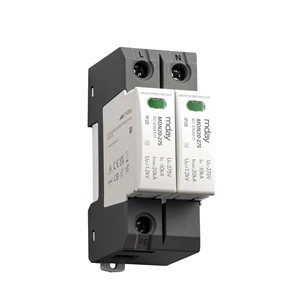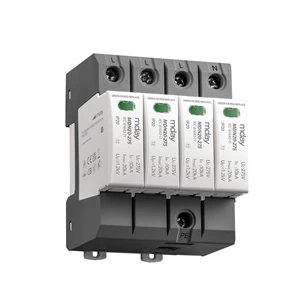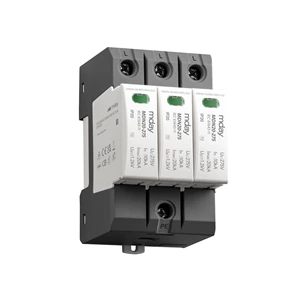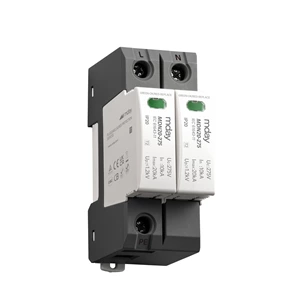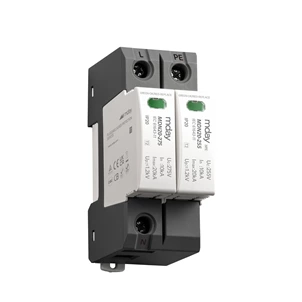Analysis Of Key Selection Criteria And Practical Specifications For Surge Protectors In Power Systems
Power systems are frequently affected by sudden electromagnetic interference such as power surges during operation. To protect electrical equipment from damage caused by these interferences, surge protectors are essential devices. This report will introduce the basic principles and classification of surge protectors, and how to select a suitable surge protective device to protect the power system. By scientifically and rationally selecting surge protectors, the stability and reliability of the power system can be improved.
I. Introduction
Various devices in a power system often face the risk of sudden electromagnetic interference from lightning strikes, switching operations, power failures, etc. These interferences can cause significant voltage fluctuations, leading to damage or even malfunctions of electrical equipment. Therefore, the rational selection of suitable surge protectors in a power system is crucial.
II. Basic Principles and Classification of Surge Protectors
1. Basic Principles: Surge protectors protect electrical equipment from surges by absorbing and dispersing overvoltages entering the power system, guiding the overvoltage energy to the ground wire or other acceptable path. The basic principles include key indicators such as breakdown voltage, energy absorption, and response time.
2. Classification: According to the international standard IEC 61643, surge protectors are classified into Type 1 (T1), Type 2 (T2), and Type 3 (T3).
Type 1 (T1) SPD: Its function is to withstand direct lightning strike current (10/350μs waveform), exhibiting the strongest energy absorption capacity. Commonly used in building entrances, main distribution boxes, and buildings with external lightning rods.
Type 2 (T2) SPD: Its function is to prevent conducted overvoltage (8/20μs waveform), commonly used in distribution boxes, floor distribution boxes, and industrial control cabinets.
Type 3 (T3) SPD: Its function is to protect terminal equipment and suppress residual voltage; often installed at the front end of equipment (sockets, inside equipment boxes).
III. Steps and Considerations for Selecting a Suitable surge protector
1. Understand System Requirements: First, it is necessary to understand the operating voltage, rated current, frequency, and other parameters of the power system, as well as the system's reliability requirements and the sensitivity of the protected equipment.
2. Consider Protection Level: Determine the required protection level based on the system's needs and the importance of the protected equipment. Different levels of surge protectors have different withstand capabilities and protection capabilities.
3. Study Technical Specifications: Refer to relevant technical specifications and standards, such as IEC 61643-1, to understand the performance requirements and testing methods of surge protectors.
4. Select the appropriate type and rated parameters: Based on the characteristics and requirements of the power system, select the appropriate surge protection device type and rated parameters, such as rated voltage, rated current, and response time. Also consider the installation and connection methods of the surge protector to ensure compatibility with the power system.
5. Consider maintenance and troubleshooting: Select a surge protector that is easy to maintain and troubleshoot, so that it can be repaired or replaced promptly when needed.
6. Consult professionals: When selecting a surge protector, consult professional power system engineers or suppliers for expert advice and technical support.
7. Conduct field testing and evaluation: Before making a final selection, conduct field testing and evaluation to ensure that the selected surge protector meets the system's requirements and expected performance.
IV. Application Cases of Surge Protectors
1. Power Plants: Power generation equipment in power plants is highly sensitive to surges, therefore, type 1 SPD are needed to protect the equipment from surge interference from the power grid.
2. Transmission Lines: Long-distance transmission lines are susceptible to interference such as lightning strikes, requiring type 2 SPD to protect transmission lines and transformers from power surges.
3. Power Transformers: As a crucial component of the power system, power transformers are often exposed to power surge risks. Installing appropriate surge protectors at the input and output terminals of transformers can protect them from surges.
V. Conclusion
Surge protectors play a vital role in protecting power systems. By understanding system requirements, considering protection levels, studying technical specifications, selecting appropriate types and ratings, considering maintenance and troubleshooting, consulting professionals, and conducting on-site testing and evaluation, suitable surge protectors can be selected to protect the power system. Correct selection and application of surge protectors help improve the stability and reliability of the power system and minimize the damage and failure of equipment caused by surges.




